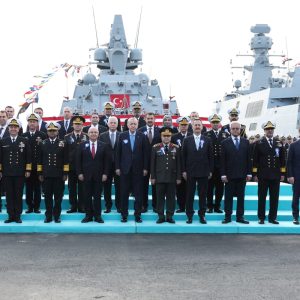From Atlanticism to Pacificism: Reorienting U.S. Defense Strategy
The phrase From Atlanticism to Pacificism denotes not merely a geographic reorientation but a paradigmatic shift in the United States’ strategic ontology. For over two centuries, U.S. foreign and defense policy was deeply embedded in Euro-Atlantic constructs, a product of historical-cultural affinity, economic interdependence, and the geopolitical imperatives of the 18th to 20th centuries. In the post–Cold War international system, however, the rise of China as a peer competitor necessitates a reallocation of strategic bandwidth, fiscal resources, and alliance architecture toward the Indo-Pacific — a theatre now central to determining the structure of global order.
The Atlanticist Paradigm: Origins and Persistence
From the late 18th century, U.S. strategic thinking was conditioned by what can be termed the Atlanticist security imaginary. The Revolutionary War and subsequent conflicts against European powers, followed by participation in both World Wars, cemented the West European axis as the locus of American military and diplomatic engagement. During the Cold War, the institutionalization of NATO formalized the Europe-first grand strategy, with figures such as Truman, Marshall, Kennan, and Acheson constructing a transatlantic security community premised on collective defense against the Soviet Union.
Post-1991, rather than dissolving in the absence of its founding threat, NATO underwent strategic re-legitimation through out-of-area operations in the Balkans and Middle East, as well as geographic expansion into Eastern Europe. This perpetuation of Atlanticism constituted a departure from Washington’s early realist injunctions against permanent alliances, embedding structural path dependencies within U.S. defense policy.
Structural Drivers of a Pacificist Turn
Contemporary shifts in the global distribution of capabilities — as outlined in power transition theory — provide a compelling rationale for reorientation. The People’s Republic of China has emerged as a comprehensive challenger across economic, technological, maritime, and military domains. Concurrently, India’s ascent, the European Union’s consolidation of defensive capacity, and the relative de-securitization of the Middle East in U.S. threat assessments collectively argue for a recalibration of strategic priorities.
Yet, bureaucratic inertia and the persistence of Atlanticist epistemic communities in Washington have blunted prior attempts at rebalancing. The Obama-era “pivot to Asia” was largely discursive; only under the Trump administration, influenced by a cohort of “China super hawks,” did substantive elements of Pacificist policy begin to take shape. Nevertheless, residual commitments in Europe — notably, NATO’s expanded role in Ukraine — diverted critical force structure, fiscal resources, and policy attention from the Indo-Pacific.
Ukraine as an Atlanticist Entrenchment Mechanism
Ukraine exemplifies the Atlanticists’ capacity to anchor U.S. defense priorities in Europe despite structural imperatives for a shift. Since the 2008 Bucharest NATO summit, calls for Ukrainian and Georgian accession have been a recurrent feature of Atlanticist policy advocacy. The 2014 Euromaidan transformation, facilitated in part by Western political and material support, elicited predictable Russian countermeasures, consistent with realist expectations regarding NATO’s eastward expansion.
Strategically, this trajectory has had the second-order effect of tightening Sino-Russian alignment, thereby undermining opportunities for triangular diplomacy aimed at creating fissures within the Eurasian balance of power. The provision of advanced strike capabilities to Kyiv and continued political signaling toward NATO membership further institutionalize U.S. entanglement in the European theater.
Pacificism as Strategic Reconstitution
Pacificism represents a reconstitution of U.S. grand strategy along the lines of regional prioritization and functional deterrence. The doctrine emphasizes maritime, aerospace, and space power projection as central pillars, supported by a latticework of bilateral and minilateral security arrangements. Japan, India, Australia, the Philippines, South Korea, and Vietnam are conceptualized as pivotal nodes in a countervailing coalition to China’s Belt and Road–enabled maritime reach.
Within this construct, traditional European partners retain relevance but are relegated to secondary status in the strategic hierarchy. Pacificism entails the reallocation of limited defense appropriations away from European contingencies, the renegotiation or abrogation of anachronistic security guarantees, and the cultivation of adaptive, interest-driven coalitions capable of dynamic threat response.
Conclusion: Overcoming Strategic Patch Dependency
The movement From Atlanticism to Pacificism constitutes an attempt to resolve the tension between historical path dependency and emergent structural imperatives. While the Europe-first posture of the 20th century was strategically rational in countering existential threats from Nazi Germany and the Soviet Union, the contemporary security environment — characterized by China’s systemic challenge to U.S. primacy — demands a Pacific-first orientation.
The key variable is not strategic theory but political will: whether Washington’s policy elite can dismantle the epistemic and bureaucratic architecture of Atlanticism before China’s relative power further consolidates. In structural realist terms, failure to do so risks strategic misalignment at a moment of intensifying great power competition.

Further Reading:











